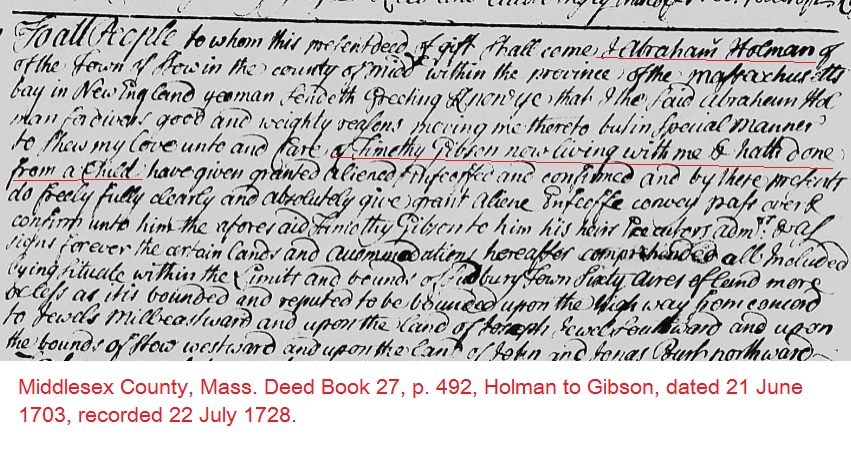The vast majority of times land deeds contain pretty much dry, mundane details:
- who is selling or transferring the land to someone–grantor
- who is receiving the land–grantee
- where the property is located–the legal description
- how much money (if any) is changing hands–the consideration
- date of execution
- date of acknowledgement
- date of recording
Sometimes that is enough to move research further. And sometimes there is more like there is in this 1703 deed for property in Middlesex County, Massachusetts between Abraham Holman and Timothy Gibson.
No money changed hands. There is no consideration.
But usually when no money changes hands, the deeds make some acknowledgement of that. Frequently the phrase is “love and consideration” or something with equal import is used. Holman’s deed to Gibson used more specific language and gave more detail about their relationship:
“…for good and weighty reasons…to show my love unto and care of Timothy Gibson…now living with me & hath done from a Child…”
That is as much as it says, but that’s significantly more than one usually encounters in deeds of this type. And that’s why it is always important to read the entire document, even if it appears that much of the item is boilerplate text. It is also why every type of record should be used in any research.
Why it took twenty-five years to record the deed is not mentioned, but it is noted.


2 Responses
It would have been up to the grantee to bring the instrument for recording (paying any recordation fees and/or taxes). You may discover whether the delay had a reason such as intention to sell some or all of the property, or some other reason.
Selling it was my immedite thought, but there could have been other reasons as you indicated. I’ll have to see when the deed of sale was executed.